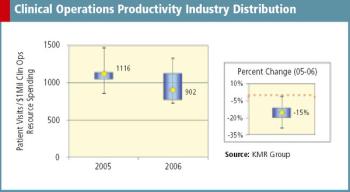
Tigermed Consulting joins Shanghai CRO Service Alliance, CROSA.

ClinPhone and invivodata create a new global partnership to provide electronic patient reported outcomes (ePRO) solutions.

A new partnership between Premier Research Group and Octagon Research Solutions will expand the companies' solution sets.

ClinPhone has announced its preliminary results for the year, reporting revenue growth of 15%.

As Octagon experienced significant growth in its CDISC SDTM related business, leaders in clinical data standardization note increased interest in CDISC standards.

Introducing ACT's new enewsletter, Lab Views, which will bring you news specific to the laboratory and its uses in clinical trials including deals, alliances, business developments, people news and events.

Medidata Rave becomes the first and only clinical trial solution certified on all eight uses of the Operational Data Model.

Interspond Introduces Electronic Investigator Grant Payment Process at IIR's Partnerships with CROs Conference in Las Vegas.

eResearchTechnology and nSpire Health form alliance to benefit clinical researchers with cardio-pulmonary services.

Supportive Oncology Services' direct collection of Patient-Reported Outcomes (PROs) improves cancer care.

A perspective piece from the New England Journal of Medicine calls for improvements in trial design for biomedical HIV treatments.

A new multiple sclerosis compound is now in the early stages of clinical trials

Clinical Trial Technology Company Broadens Partner Program in Response to Increasing Demand for Medidata Rave and Growing CRO and Service Provider Market.

ACT Style Guidelines

The Indian government has reacted to the enforced closure of three of its oldest vaccine manufacturing plants by launching a plan to convert them to drug testing laboratories.

Clinical and Anatomic Central Laboratory Services Combined

Investigators' financial interests have little effect on potential clinical trial participants.

Exhibitor Profile Form

The Drug Information Association hosted its 20th Annual European meeting in Barcelona, Spain, where industry experts discussed topics at the forefront of European pharma.

News tidbits from around the world

A recent survey from KMR Group shows a 15% decline in clinical operations productivity since 2005.

For the first time n a Phase 1 trial, 3D animation is used for informed consent.

Europe aims to create new regulations regarding hematological malignancies.

A look at the latest industry news

Janet Woodcock is welcomed back as the director of the Center for Drug Evaluation and Research (CDER).

Profect Medical Technologies today announced the introduction of their Clinical Imaging Services division and the hiring of Holly Smith as its Director.

ACT License Agreement

ACT Manuscript Review Form

Leading EDC Company Adds Offerings to Further Drive Efficiencies Across the Clinical Research Process.